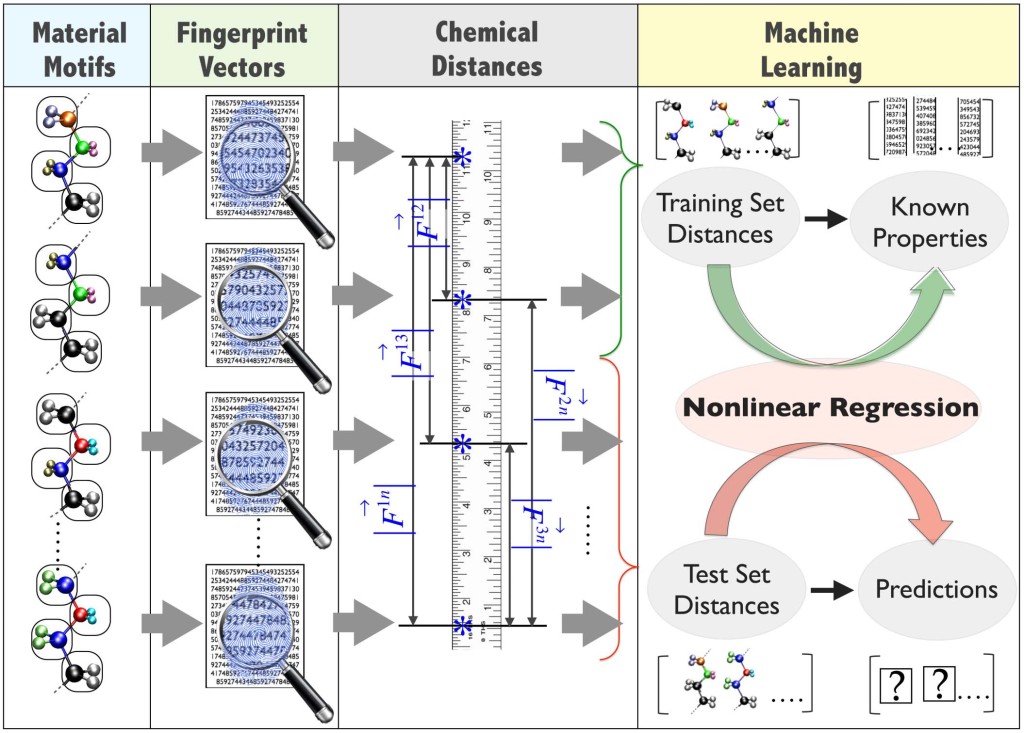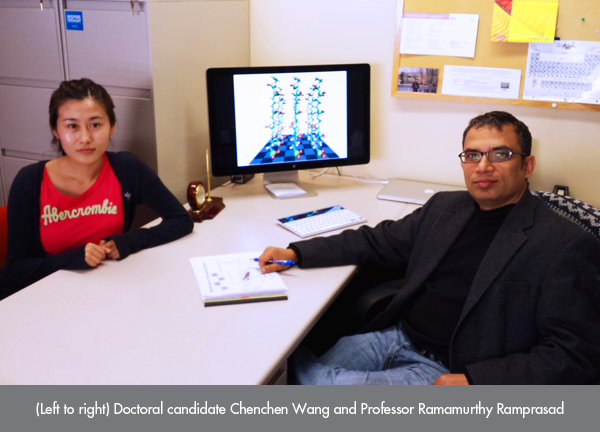“Accelerating Materials Property Predictions Using Machine Learning” Published in Scientific Reports
By Giorgina Paiella
Professor Ramamurthy Ramprasad, postdoctoral fellow Dr. Ghanshyam Pilania, and doctoral candidate Chenchen Wang of Materials Science and Engineering, in conjunction with Professor Sanguthevar Rajasekaran (Computer Science and Engineering) and Dr. Xun Jiang (Ph.D. Statistics 2013), jointly collaborated on a research paper published online on September 30, 2013 in Scientific Reports, the open access journal of Nature.
The paper, entitled “Accelerating Materials Property Predictions using Machine Learning,” details the researchers’ findings.
The authors demonstrate that data-driven methods may be used for the rapid prediction of a diverse set of material properties by employing machine learning methods, part of an emerging brand of informatics tools aimed at materials discovery. These findings parallel the goals of the Materials Genome Initiative, a collaborative government venture aimed at accelerating the discovery, manufacture, and deployment of advanced materials at a fraction of the cost. The authors apply this materials property prediction paradigm to a class of polymers, and have identified tin-containing polymers as particularly promising for electronic and energy storage applications.
Professor Ramprasad notes the broad implications of this development in the area of materials discovery. He states: “Although the initial materials dataset that we used were generated using quantum mechanics based modeling, the adopted strategy may be used in conjunction with experimental, empirical or other computational data to enable accelerated materials discovery.” Therefore, this concept can be utilized in a wide range of datasets, applications, and disciplines.
The paper is based upon research and work supported by a Multidisciplinary University Research Initiative (MURI) grant. Professor Ramprasad was awarded a MURI grant in July 2010 to guide the design and synthesis of polymeric films for capacitive energy storage. The grant was awarded by the Office of Naval Research with the purpose of supporting teams of researchers investigating high-priority topics that intersect more than one traditional science and engineering discipline.
The paper in its entirety can be read here.

The machine (or statistical) learning methodology. First, material motifs within a class are reduced to numerical fingerprint vectors. Next, a suitable measure of chemical (dis)similarity, or chemical distance, is used within a learning scheme—in this case, kernel ridge regression—to map the distances to properties.
Published: October 18, 2013
Categories: faculty, news, publications
Available Archives
